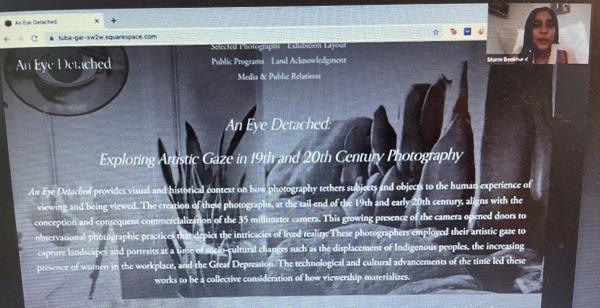LACMA recently hosted its sixth Mellon Summer Academy, which, because of the continued COVID-19 pandemic, was a two-week virtual experience in 2021. The 15 undergraduate students still had eye-opening experiences learning about the inner workings of museums, considering multiple career paths related to art, art history, and other fields of study, connecting with their peers, and creating engaging final projects that showcase what they want to see on the walls at art museums. The Summer Academy is a component of the Andrew W. Mellon Undergraduate Curatorial Fellowship Program, which is generously supported by The Andrew W. Mellon Foundation.
For the 2021 Summer Academy's virtual exhibition project, the three student groups co-curated a virtual exhibition based on photographs from LACMA’s Marjorie and Leonard Vernon Collection. They selected photographs around a theme of their choice, researched the artists and artworks, wrote gallery text and object labels, determined the installation of the show, and considered outreach efforts and public programs to engage visitors. Each student group also had a Mellon Undergraduate Curatorial Fellow or alumna as an advisor on their project, enabling the participants to spend time with an individual who is in the next phase of the program. On the final day of the program, each group of students presented their exhibition ideas to the museum’s director, the donor’s family, staff, family, and friends.
Over the coming weeks we will take a closer look at each group’s final presentation.
An Eye Detached: Exploring Artistic Gaze in 19th and 20th Century Photography
Co-curators: Storm Bookhard, Marisa Cruz Branco, Sydney Huynh, Maria Lentz, and Michael Soto
An Eye Detached provides visual and historical context on how photography tethers subjects and objects to the human experience of viewing and being viewed. The creation of these photographs, at the tail end of the 19th and early 20th century, aligns with the conception and consequent commercialization of the 35 millimeter camera. This growing presence of the camera opened doors to observational photographic practices that depict the intricacies of lived reality. These photographers employed their artistic gaze to capture landscapes and portraits at a time of socio-cultural changes such as the displacement of Indigenous peoples, the increasing presence of women in the workplace, and the Great Depression. The technological and cultural advancements of the time led these works to be a collective consideration of how viewership materializes.
Addressing the tension between subject autonomy and the disembodied lens, An Eye Detached evaluates the application of gaze to not only human bodies, but also to objects, cityscapes, and natural landscapes. This selection from the Marjorie and Leonard Vernon Collection ranges from somber Pictorialist portraiture to depictions of organic dynamism to government-mandated documentation of the “human condition.” Together they explore varied perspectives of subjectivity versus objectivity in the medium of photography.
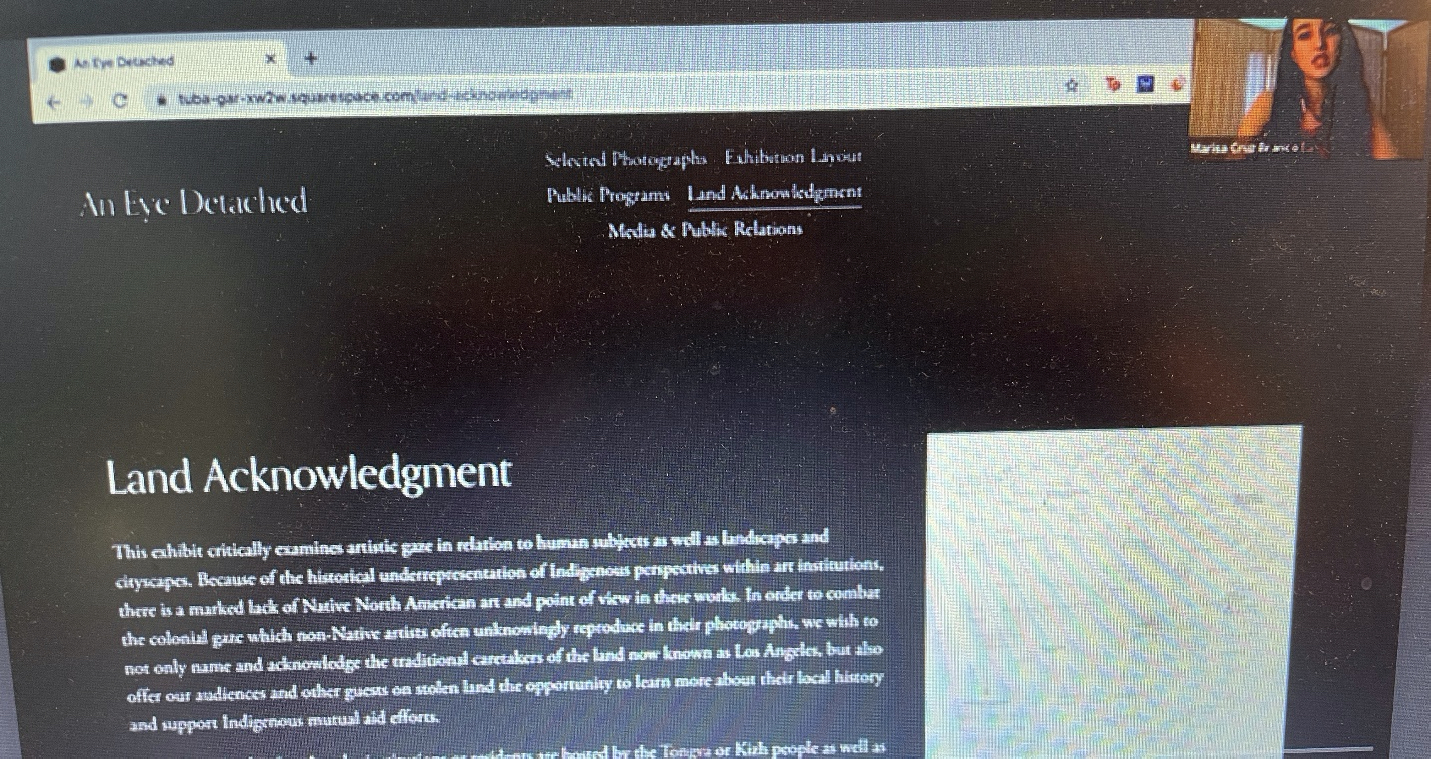
Land Acknowledgement
This exhibit critically examines artistic gaze in relation to human subjects as well as landscapes and cityscapes. Because of the historical underrepresentation of Indigenous perspectives within art institutions, there is a marked lack of Native North American art and points of view in these works. In order to combat the colonial gaze which non-Native artists often unknowingly reproduce in their photographs, we wish to not only name and acknowledge the traditional caretakers of the land now known as Los Angeles, but also offer our audiences and other guests on stolen land the opportunity to learn more about their local history and support Indigenous mutual aid efforts.
LACMA and other Los Angeles institutions or residents are hosted by the Tongva or Kizh people as well as members of the Chumash Tribe. If you would like to know more about whose traditional homelands your community occupies, you can visit Native Land and enter your location. If you are interested in redistributing wealth and extending financial support to Indigenous communities, the Indigenous Mutual Aid Directory can help you find Indigenous aid efforts all around North America.
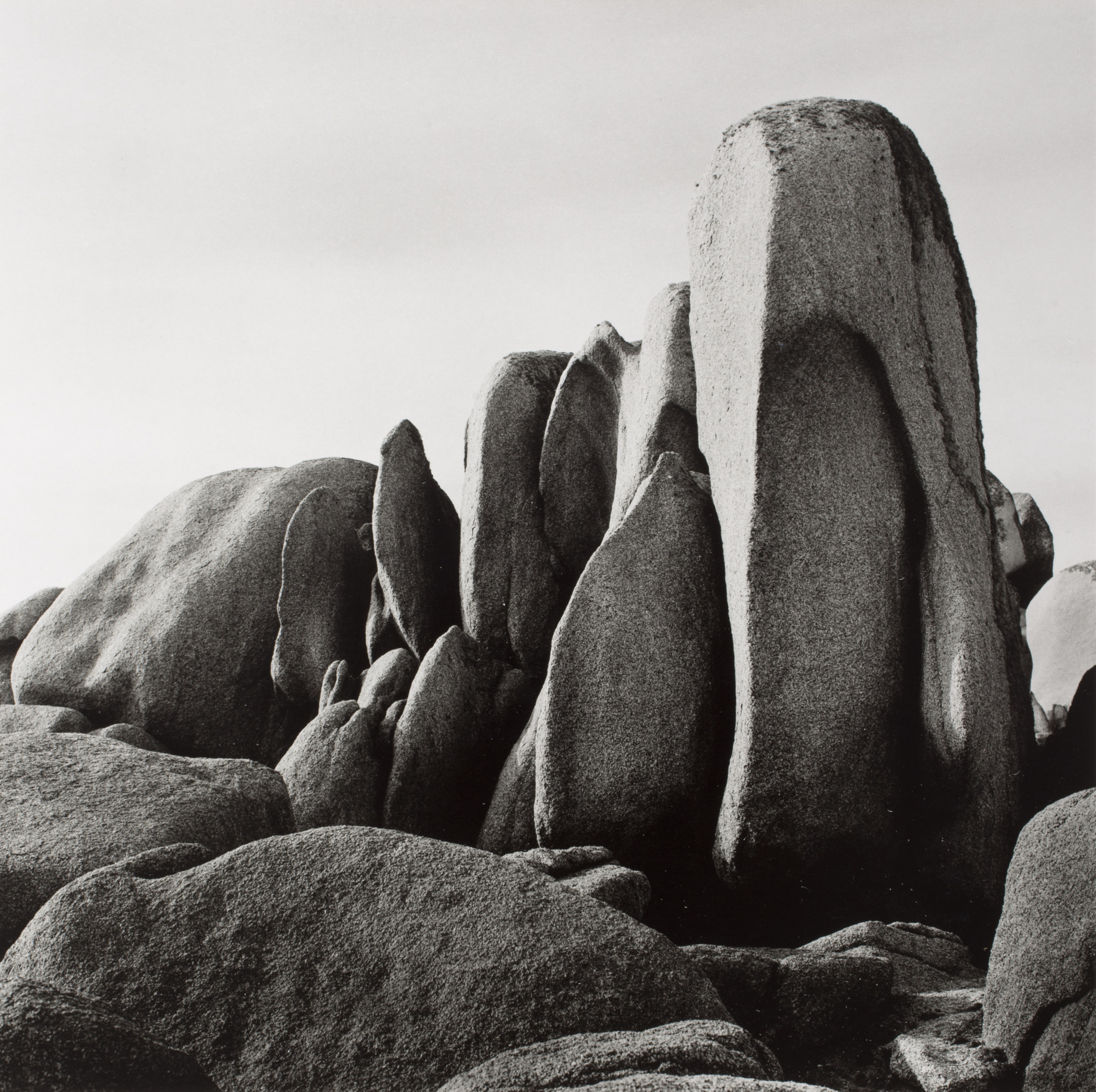
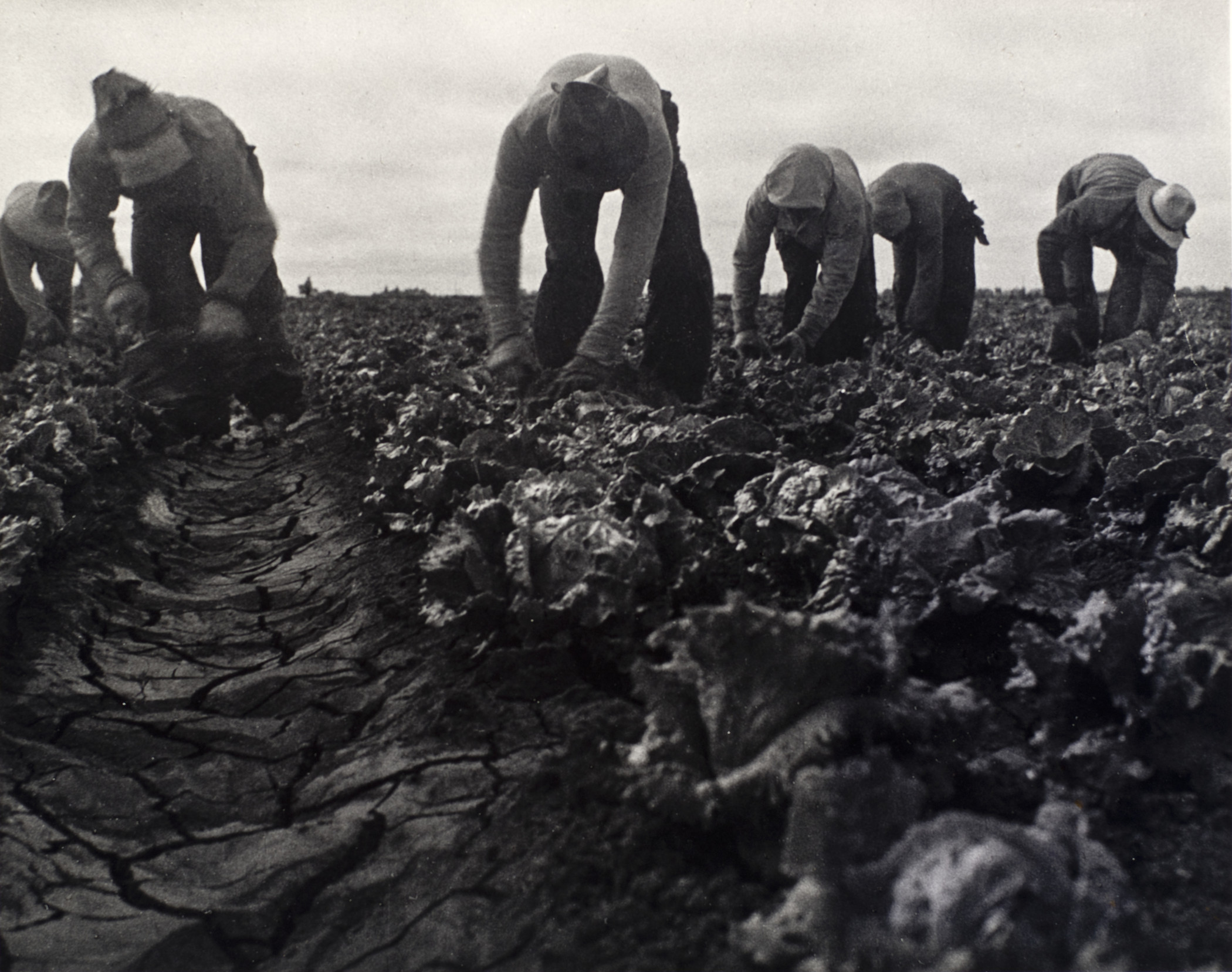
After living as a housewife in urban London, Fay Godwin rediscovered the English countryside through long walks and photography such as White Rocks. Her works emphasize the character and heritage of the landscape. Godwin was also an avid environmentalist, with many of her photos depicting human incursion on the earth. Salinas Lettuce Pickers, Calif. by Dorothea Lange illustrates produce workers in California during the Great Depression. As a photographer for the Farm Security Administration, Lange captures the dismal reality of American life during economic strife. Her aesthetic portrayals highlight the privilege of photographers and spectators interpreting this scene of hardship as art, contributing to the romanticization and exploitation of labor. The visual continuity between these two photographs contextualizes the human form within nature. The organic curvature present in both photographs grounds the subjects in the spaces and moments they inhabit.
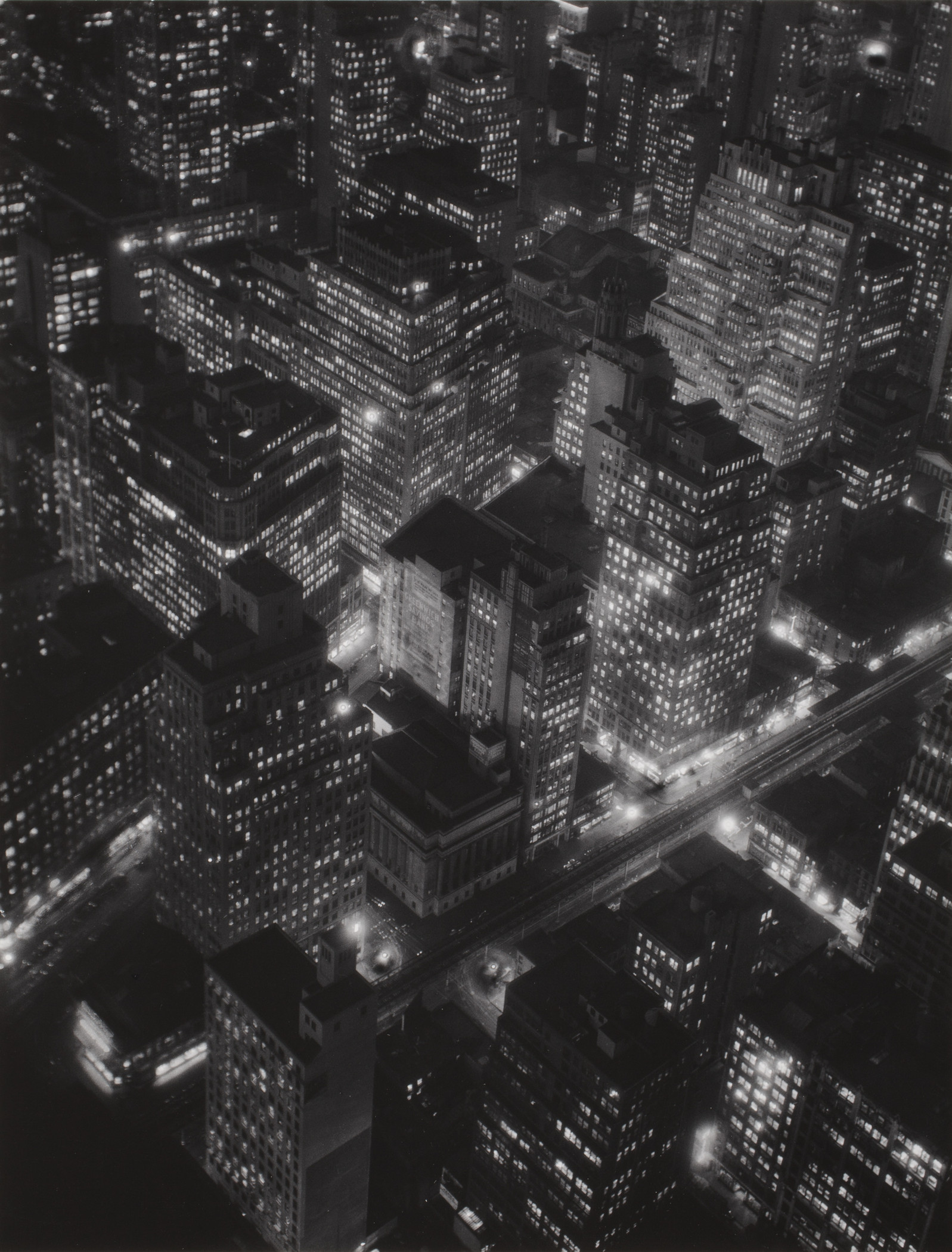
Berenice Abbott was an American photographer best known for her city photographs of 1930s architecture and urban design. She worked on a specially designed lighting process that she called Projection Photography. Her artistic vision follows the expeditious transformation of the built landscape, documenting New York during the Great Depression with the support of the Works Progress Administration Federal Art Project. Here, the camera hangs off an upper floor of the Empire State Building, capturing a fleeting moment within the cityscape. Abbott's photograph offers a varied perspective of the pulsating excitement surrounding American technological achievements, blending cubist visual constructions with the reality of urban modern architecture.
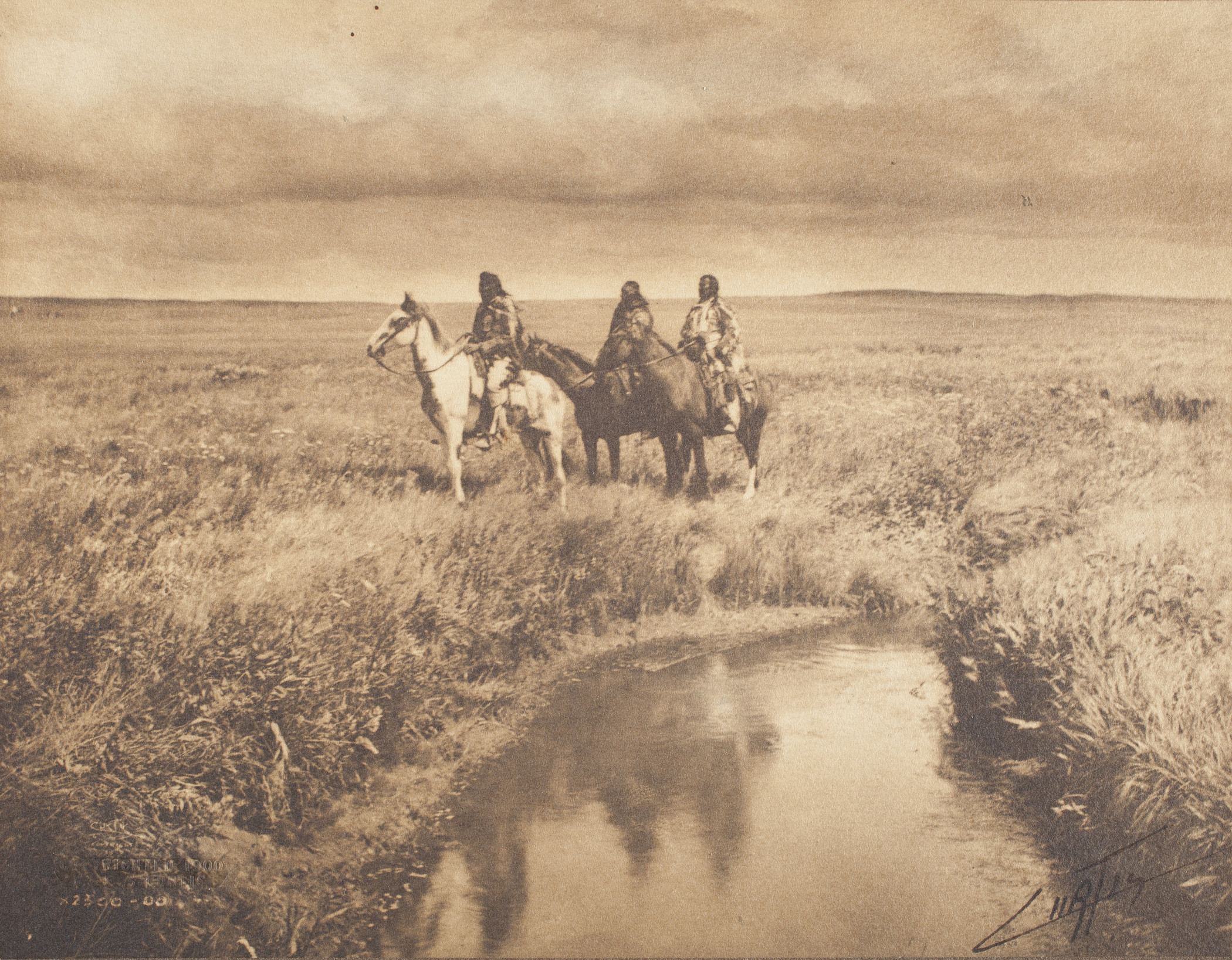
This photograph, depicting three Piikáni tribal members, is one of the first images of Native American people that Edward Curtis produced. Curtis’s extensive body of work includes some of the most well-known images of Native North American people. Although his photographs have largely been framed as ethnographic or documentary, Curtis’s artistic gaze determines how his subjects are posed in regalia. He produced Three Chiefs—Piegan while visiting Piegan, Montana, with ethnographer George Bird Grinnel in 1900, spending three days looking for his desired balance of landscape and subject. His false objectivity and preconceived notions of Indigenous people have become naturalized in non-Native views of Native North Americans.
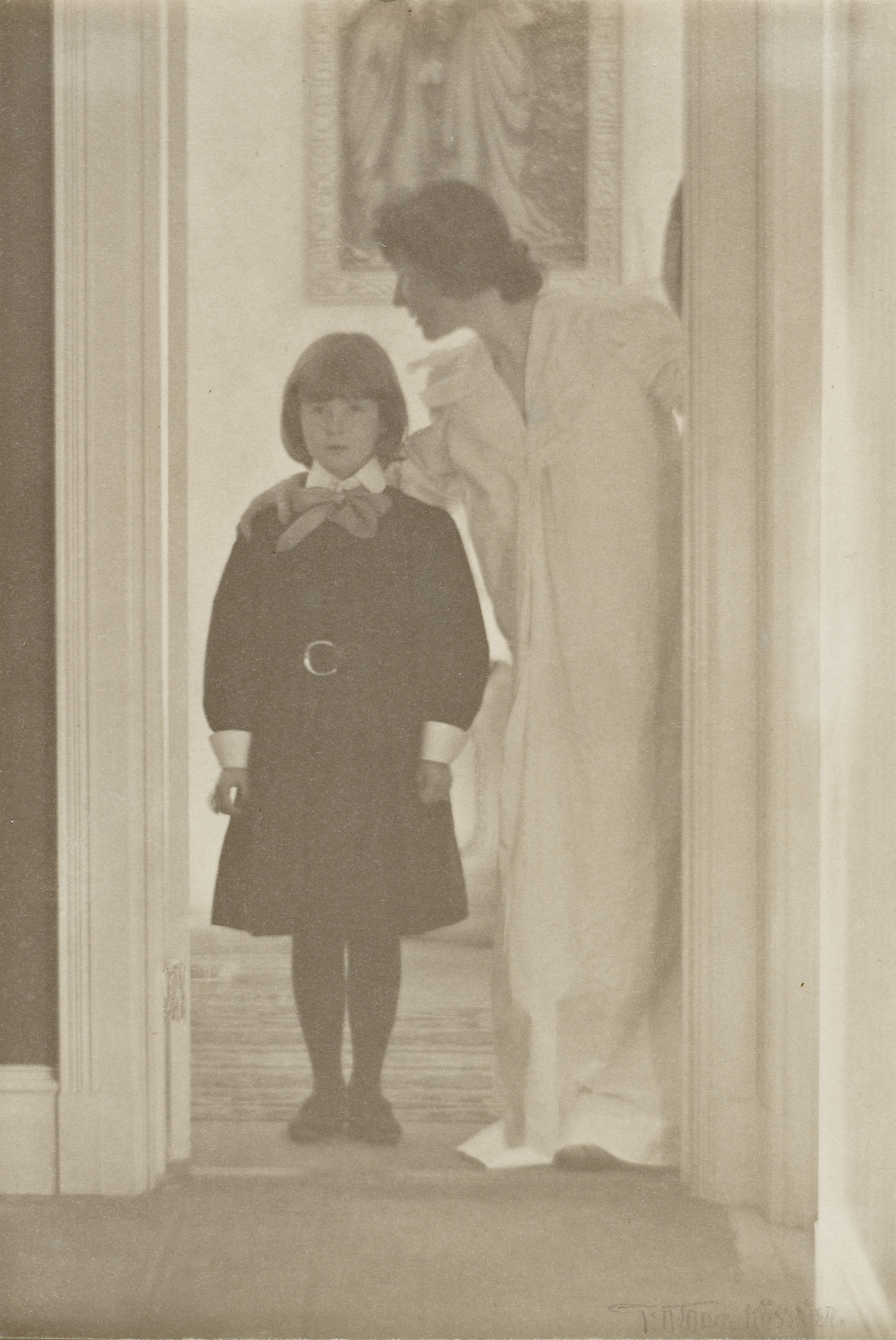
Gertrude Käsebier's platinum print portrays a tender yet powerful moment between Agnes Rand Lee and her daughter Peggy, as Agnes urges her daughter to take her first step into the outside world both literally and metaphorically. As a dedicated advocate of the progression of the woman’s role within the sphere of photography, Käsebier often depicted the subject of femininity in her work. This is exemplified here with an archetypal image of motherhood as well as a titular reference to the Virgin Mary. Agnes’ flowy, ethereal dress reflects her gentle gesture towards the exit of the threshold, while Peggy’s bold, dark dress and steadfast eye contact encompasses the imminence of societal progression for the forthcoming generation of women.
Proposed public programs for the show would include:
Snapshot of the Past: Exploring the History of Photography
Join us for an interactive lesson on the history of photography in the late 19th and early 20th centuries. You can explore the impact of the camera and of the technology used to develop early photographs while holding said objects in your own hands. We will also be discussing the common role of photographers as outsiders as well as the tension between artistic gaze and the lived reality of subjects. This event has been created in tandem with An Eye Detached, a photographic exhibition exploring these themes.

Framing Your Reality: Create Your Own Viewfinder
Join us to build your very own viewfinder, a tool that will allow you to see the world through the eye of a photographer! The event will also include a digital photography viewing and discussion about photography, perspective, and art in conjunction with the exhibition An Eye Detached.
Shaping with the Sun: A Cyanotype Workshop
Come explore a unique way to create art with natural sunlight: cyanotypes. This workshop will teach you how to use one of the oldest photographic techniques to capture imprints of everyday objects. In addition, we will discuss the implications of using photography to represent real world subjects as well as the impact of artistic intent on photography. The event will conclude with a digital viewing and discussion of some photos from the exhibition An Eye Detached.



